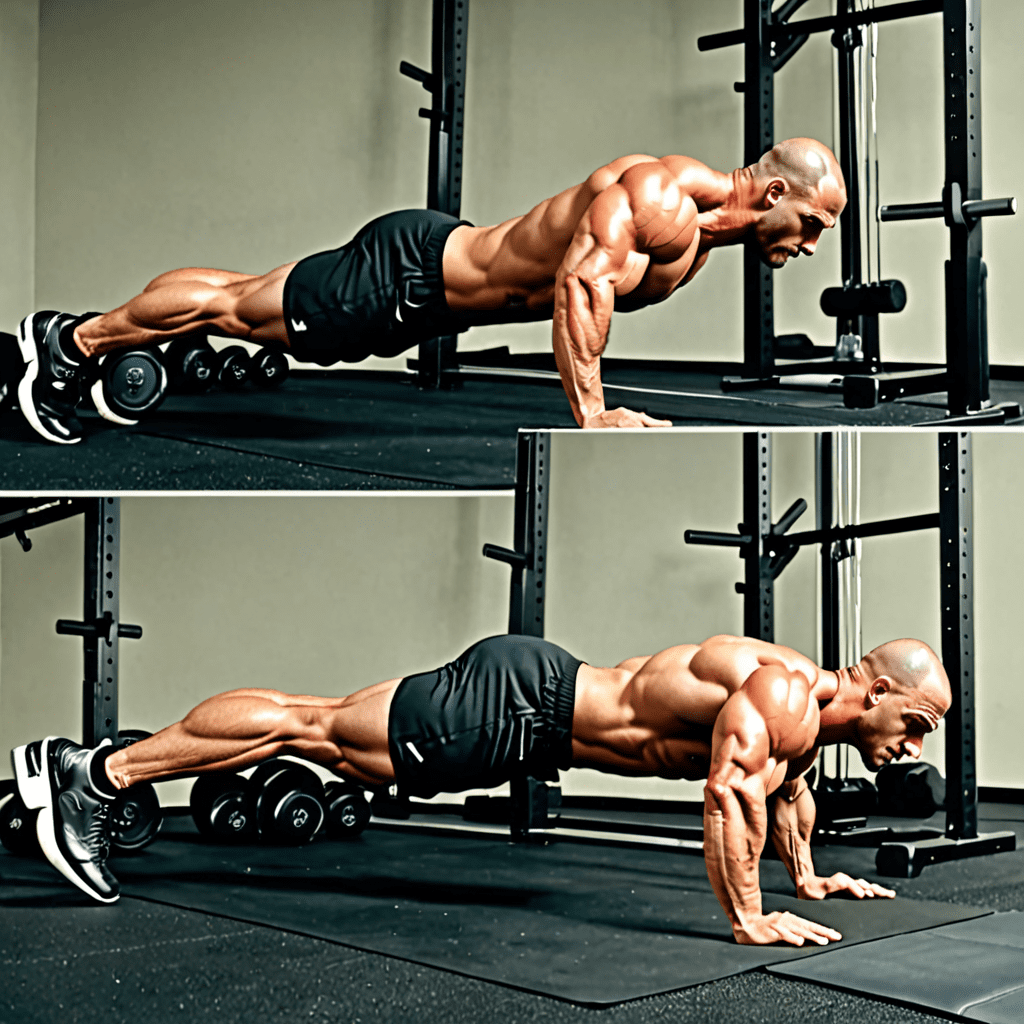The Role of Core Strength in Posture Improvement
1. Introduction
Posture is the way we hold our bodies, and it plays a significant role in our overall health and well-being. Good posture can help prevent pain, improve balance and coordination, and boost confidence. However, many people suffer from poor posture, which can lead to a variety of problems.
2. Understanding Core Muscles
The core muscles are a group of muscles that surround the abdomen, pelvis, and lower back. These muscles are responsible for stabilizing the spine, supporting the body, and allowing us to move with control and efficiency. Some of the key core muscles include the rectus abdominis, obliques, transverse abdominis, and erector spinae.
3. Benefits of a Strong Core
A strong core offers numerous benefits, including:
- Improved posture: Strong core muscles help to hold the body upright and in proper alignment.
- Reduced risk of injury: A strong core can help to prevent injuries to the back, neck, and other areas.
- Enhanced athletic performance: A strong core is essential for many sports and activities.
- Improved balance and coordination: Strong core muscles help to maintain balance and coordination.
- Increased strength and power: A strong core can help to increase overall strength and power.
4. Core Strength and Posture
Core strength plays a vital role in maintaining good posture. When the core muscles are strong, they can help to:
4.1. Impact on Alignment
Strong core muscles help to pull the spine into proper alignment, reducing the strain on the muscles and joints.
4.2. Reducing Muscle Imbalances
Strong core muscles can help to reduce muscle imbalances that can contribute to poor posture.
4.3. Enhanced Stability and Control
Strong core muscles provide the stability and control needed to maintain good posture throughout the day.
5. Exercises for Core Strength Improvement
6. Breathing Techniques for Core Engagement
Breathing plays a crucial role in core engagement. Proper breathing techniques can help to activate the core muscles and improve their ability to stabilize the spine.
Here are some breathing techniques for core engagement:
- Diaphragmatic breathing: This is the most effective way to engage the core muscles. To perform diaphragmatic breathing, place one hand on your stomach and the other on your chest. Inhale slowly through your nose, feeling your stomach expand. Exhale slowly through your mouth, feeling your stomach contract.
- Pursed-lip breathing: This technique can help to slow down your breathing and activate the core muscles. To perform pursed-lip breathing, inhale slowly through your nose and exhale slowly through pursed lips.
- Belly breathing: This technique is similar to diaphragmatic breathing, but it focuses on expanding the belly. To perform belly breathing, place one hand on your stomach and the other on your chest. Inhale slowly through your nose, feeling your stomach expand. Hold your breath for a few seconds, then exhale slowly through your mouth, feeling your stomach contract.
7. Posture Assessment and Correction
Posture assessment: It's important to assess your posture regularly to identify any imbalances or misalignments. This can be done by standing in front of a mirror with your back straight and your feet shoulder-width apart. Pay attention to the natural curves of your spine and whether your shoulders are level. You can also ask a friend or family member to take a picture of your posture from behind.
Posture correction: Once you've identified any posture problems, you can start working on correcting them. There are a variety of exercises and stretches that can help to improve your posture. You can also use ergonomic furniture and equipment to support your body in proper alignment.
Here are some additional tips for improving your posture:
- Be aware of your posture throughout the day. Pay attention to how you're sitting, standing, and walking. Make conscious adjustments to improve your posture as needed.
- Avoid slouching. When you're sitting or standing, keep your back straight and your shoulders relaxed.
- Keep your head up. Don't let your head drop forward.
- Maintain a neutral spine. The natural curves of your spine should be supported.
- Engage your core muscles. Strong core muscles help to support your spine and improve your posture.
8. Maintaining Good Posture Habits
Once you've improved your posture, it's important to maintain good posture habits. This means continuing to do the exercises and stretches that helped you improve your posture in the first place, as well as being mindful of your posture throughout the day.
Some additional tips for maintaining good posture habits include:
- Set reminders. Set regular reminders to check your posture throughout the day. You can use your phone or a sticky note to remind yourself.
- Stretch frequently. Stretching regularly can help to improve your flexibility and range of motion, which can help you maintain good posture.
- Use ergonomic furniture and equipment. Ergonomic furniture and equipment can help to support your body in proper alignment.
- Get regular exercise. Regular exercise can help to strengthen your core muscles and improve your overall fitness, which can help you maintain good posture.
9. Addressing Specific Posture Problems
There are a variety of specific posture problems that can be addressed with core strengthening exercises and other interventions. Some of the most common posture problems include:
9.1. Rounded Shoulders
Rounded shoulders are a common posture problem that can be caused by poor posture habits, weak core muscles, or tight chest muscles. To improve rounded shoulders, focus on strengthening your upper back muscles and stretching your chest muscles.
9.2. Swayback
Swayback is a posture problem that is characterized by an excessive curve in the lower back. This can be caused by weak core muscles, tight hamstrings, or poor posture habits. To improve swayback, focus on strengthening your core muscles and stretching your hamstrings.
9.3. Forward Head Posture
Forward head posture is a posture problem that is characterized by the head being positioned too far forward. This can be caused by poor posture habits, weak neck muscles, or tight chest muscles. To improve forward head posture, focus on strengthening your neck muscles and stretching your chest muscles.
10. Conclusion
Core strength is essential for maintaining good posture. By strengthening your core muscles, you can improve your alignment, reduce muscle imbalances, enhance stability and control, and prevent or address specific posture problems. In addition to core strengthening exercises, it's important to practice good posture habits and address any underlying issues that may be contributing to your posture problems.
Frequently Asked Questions (FAQs)
1. What are the best exercises for core strength?
There are a variety of exercises that can help to improve core strength. Some of the most effective exercises include planks, bridges, crunches, sit-ups, and anti-rotation exercises.
2. How often should I do core strengthening exercises?
Aim to do core strengthening exercises 2-3 times per week.
3. How can I improve my breathing techniques for core engagement?
There are a variety of breathing techniques that can help to activate the core muscles. Some of the most effective techniques include diaphragmatic breathing, pursed-lip breathing, and belly breathing.
4. How can I assess my posture?
You can assess your posture by standing in front of a mirror with your back straight and your feet shoulder-width apart. Pay attention to the natural curves of your spine and whether your shoulders are level. You can also ask a friend or family member to take a picture of your posture from behind.
5. How can I correct my posture?
There are a variety of exercises and stretches that can help to improve your posture. You can also use ergonomic furniture and equipment to support your body in proper alignment.


